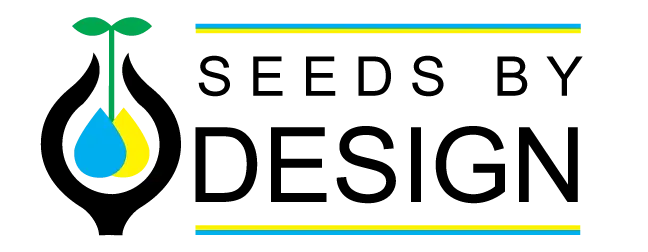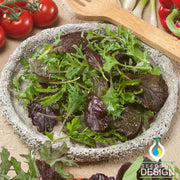DESCRIPTION
Growing Non-GMO Red Garnet Mustard Herb Seeds
Grow in clumps about 12-18 inches apart. Use straw mulch to hold in soil moisture. Start 4-6 weeks before the first frost for a fall harvest. For a spring harvest, start seeds 4 weeks ahead of the last frost. You can harvest and allow it to regrow over a period of a couple of weeks as long as the weather permits. Cut leafy greens 3-4 inches from the ground and allow sufficient time to regrow.
Mustards do well in warm weather with moist, well-draining, fertile soil. Because of their ability to reduce soil-borne root rots in legume crops mustards are often used as cover crops. They are also popularly used to create decorative vegetable gardens, though they are not a good selection for container growing.
Red Garnet Mustard in the Herb Garden
Mustards are a great annual addition to your herb garden as it provides many benefits. It can be planted as a decorative element adding height and color. This Red Garnet variety will add a splash of deep red as a beautiful pop of color to a mostly green collection of herbs. Because mustard is a part of the brassica family it will attract similar pests as other brassicas. Ideally plant near dill, yarrow, and mint as they will help prevent problems with common mustard pests. These plants often attract ladybugs and lacewings which feed on aphids. They can also repel flea beetles keeping pests under control.
Harvesting Red Garnet Mustard
Because the whole mustard plant is edible you can harvest each part at different stages. The key to keeping it alive while doing this is to avoid removing more than 1/3rd of the plant at once. To harvest its green leaves simply cut them off using a clean knife or scissors. Try to cut away the blossoms as they develop as flower development stops leaf growth. If you would like to harvest the mustard seeds, allow some blooms to mature at the end of the growing season. Cut your stems with the seed-bearing flowers and allow them to dry upside down in a bucket, or large bag. Once it is dry shake the branches against to side of your bucket to release the tiny seeds. The bucket will make it easier to collect your seeds once you are done.
About Red Garnet Mustard Garden Seeds
Mustard plays a great role in the garden as it can increase the organic matter or biomass in your garden when composted or used as a cover crop. If you decide to turn it back into the soil at the end of the season, be sure to remove any blossoms early as failing to do so may result in volunteers growing the following season.
Generally mustard is not known as a crop that does well indoors. However, it is not impossible. If you are an experienced grower you may enjoy the challenge growing mustard indoors has to offer.
Some of the sweetest tasting mustard comes from plants exposed to lower temperatures towards the end of summer/start of fall. These will likely be the leaves at the end of your harvest as mustard is not frost tolerant.
ATTRIBUTES
Basic Info
| Latin Name: |
Brassica juncea
|
| Red Garnet Mustard Color: |
Broadleaf red mustard |
| Red Garnet Mustard Flavor: |
unique spicy mustard taste |
Growing Info
| Hardiness Zone: |
Annual zones 3-7 |
| Days to Maturity: |
40 |
| Days to Germination: |
3-14 |
| Seeding Depth: |
1/4 Inches |
| Plant Spacing: |
12-18 Inches |
| Row Spacing: |
18 Inches |
| Plant Height: |
12-18 Inches |
| Growth Habit: |
Mounding |
| Soil Preference: |
Fertile, loamy, well-draining |
| Temperature Preference: |
65-75 °F |
| Light Preference: |
Full Sun |
Other
| Plant Width: |
12-18 Inches |
| Pests and Diseases: |
Susceptible to both leaf-eating and sap-sucking pests such as caterpillars, snails, slugs, aphids |






